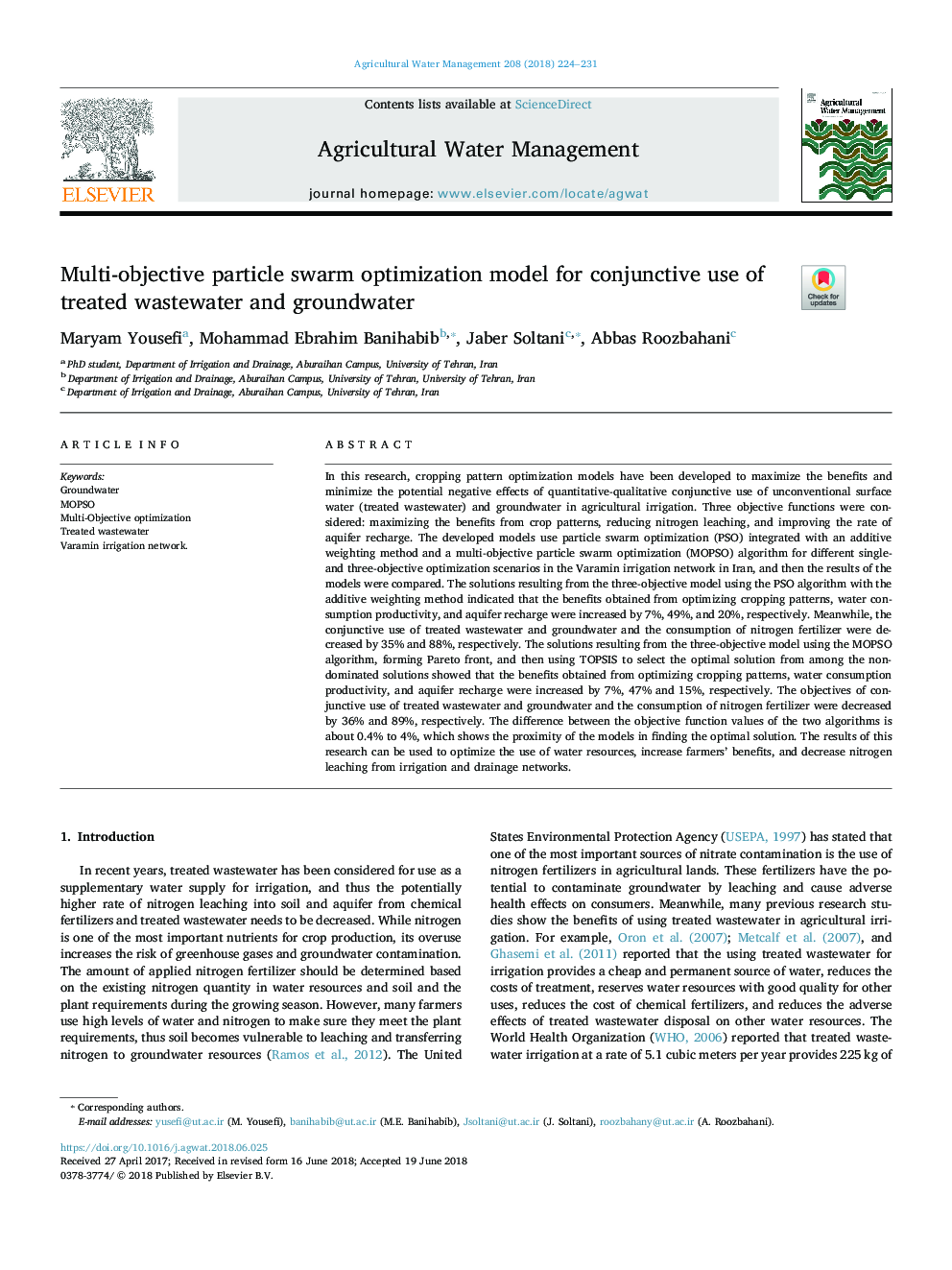| کد مقاله | کد نشریه | سال انتشار | مقاله انگلیسی | نسخه تمام متن |
|---|---|---|---|---|
| 8872780 | 1622872 | 2018 | 8 صفحه PDF | دانلود رایگان |
عنوان انگلیسی مقاله ISI
Multi-objective particle swarm optimization model for conjunctive use of treated wastewater and groundwater
ترجمه فارسی عنوان
مدل بهینه سازی ذرات چند هدفه برای استفاده مشترک از فاضلاب های تصفیه شده و آب های زیرزمینی
دانلود مقاله + سفارش ترجمه
دانلود مقاله ISI انگلیسی
رایگان برای ایرانیان
کلمات کلیدی
موضوعات مرتبط
علوم زیستی و بیوفناوری
علوم کشاورزی و بیولوژیک
علوم زراعت و اصلاح نباتات
چکیده انگلیسی
In this research, cropping pattern optimization models have been developed to maximize the benefits and minimize the potential negative effects of quantitative-qualitative conjunctive use of unconventional surface water (treated wastewater) and groundwater in agricultural irrigation. Three objective functions were considered: maximizing the benefits from crop patterns, reducing nitrogen leaching, and improving the rate of aquifer recharge. The developed models use particle swarm optimization (PSO) integrated with an additive weighting method and a multi-objective particle swarm optimization (MOPSO) algorithm for different single- and three-objective optimization scenarios in the Varamin irrigation network in Iran, and then the results of the models were compared. The solutions resulting from the three-objective model using the PSO algorithm with the additive weighting method indicated that the benefits obtained from optimizing cropping patterns, water consumption productivity, and aquifer recharge were increased by 7%, 49%, and 20%, respectively. Meanwhile, the conjunctive use of treated wastewater and groundwater and the consumption of nitrogen fertilizer were decreased by 35% and 88%, respectively. The solutions resulting from the three-objective model using the MOPSO algorithm, forming Pareto front, and then using TOPSIS to select the optimal solution from among the non-dominated solutions showed that the benefits obtained from optimizing cropping patterns, water consumption productivity, and aquifer recharge were increased by 7%, 47% and 15%, respectively. The objectives of conjunctive use of treated wastewater and groundwater and the consumption of nitrogen fertilizer were decreased by 36% and 89%, respectively. The difference between the objective function values of the two algorithms is about 0.4% to 4%, which shows the proximity of the models in finding the optimal solution. The results of this research can be used to optimize the use of water resources, increase farmers' benefits, and decrease nitrogen leaching from irrigation and drainage networks.
ناشر
Database: Elsevier - ScienceDirect (ساینس دایرکت)
Journal: Agricultural Water Management - Volume 208, 30 September 2018, Pages 224-231
Journal: Agricultural Water Management - Volume 208, 30 September 2018, Pages 224-231
نویسندگان
Maryam Yousefi, Mohammad Ebrahim Banihabib, Jaber Soltani, Abbas Roozbahani,
